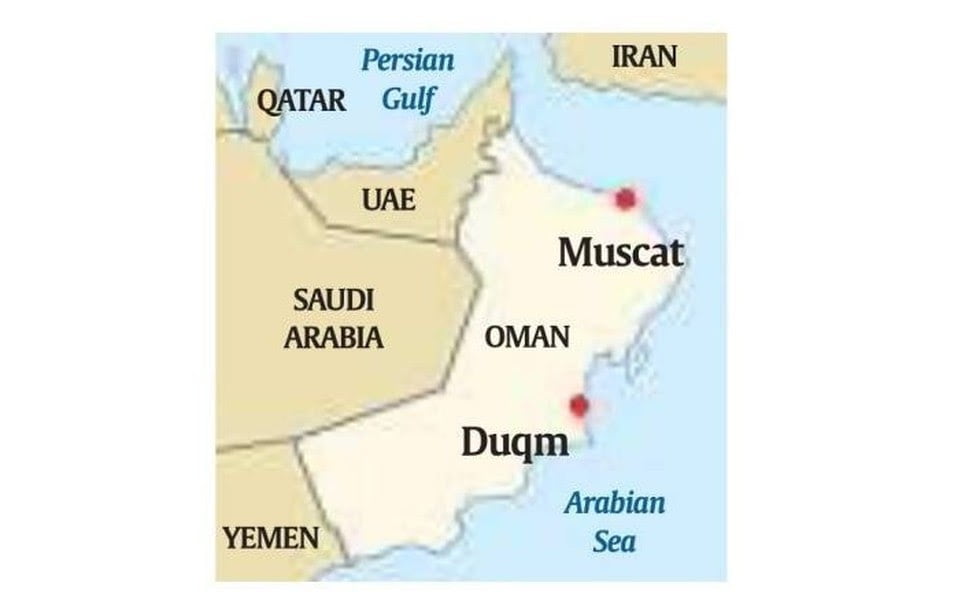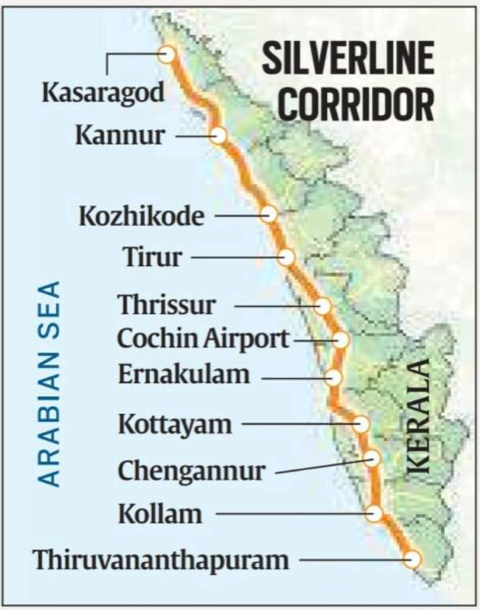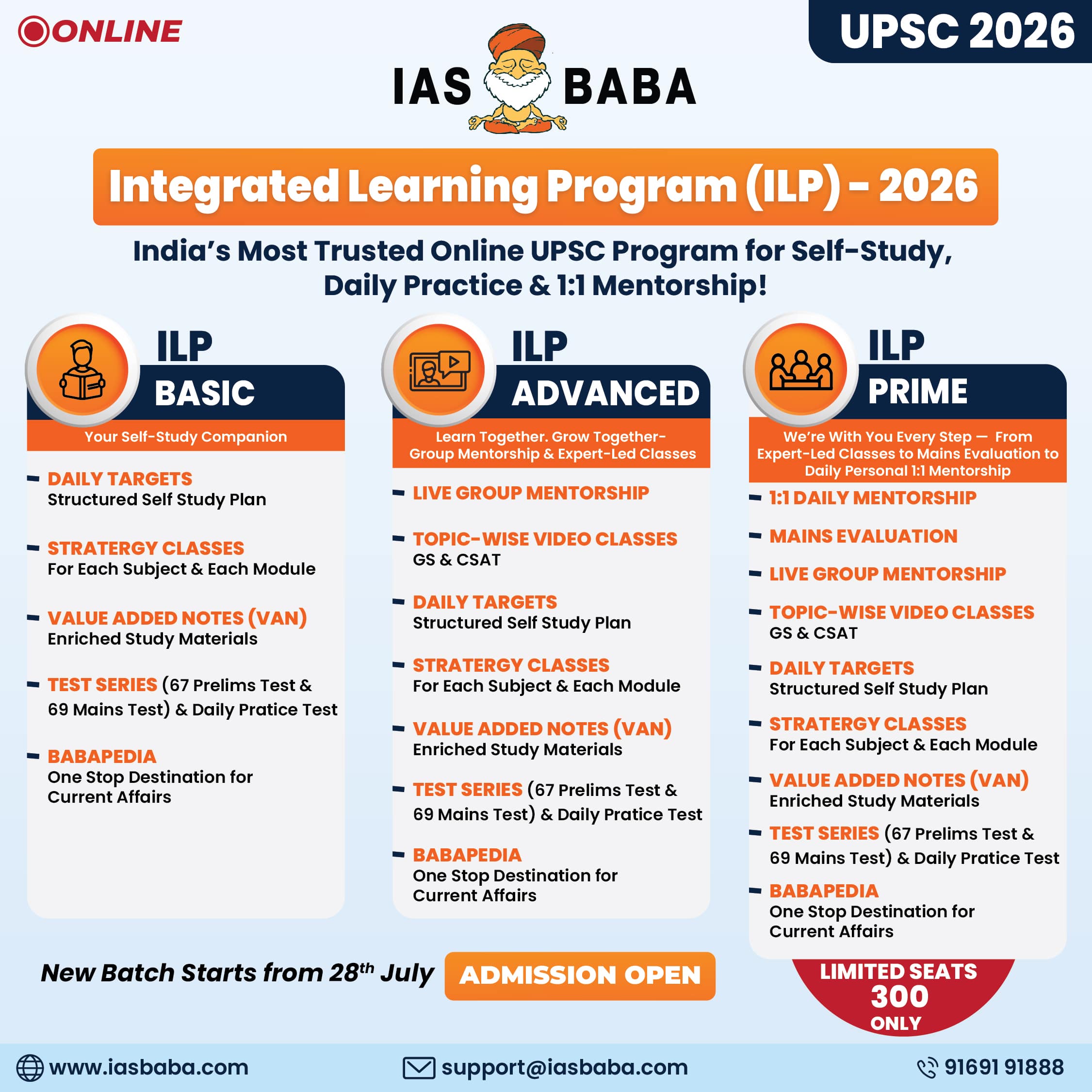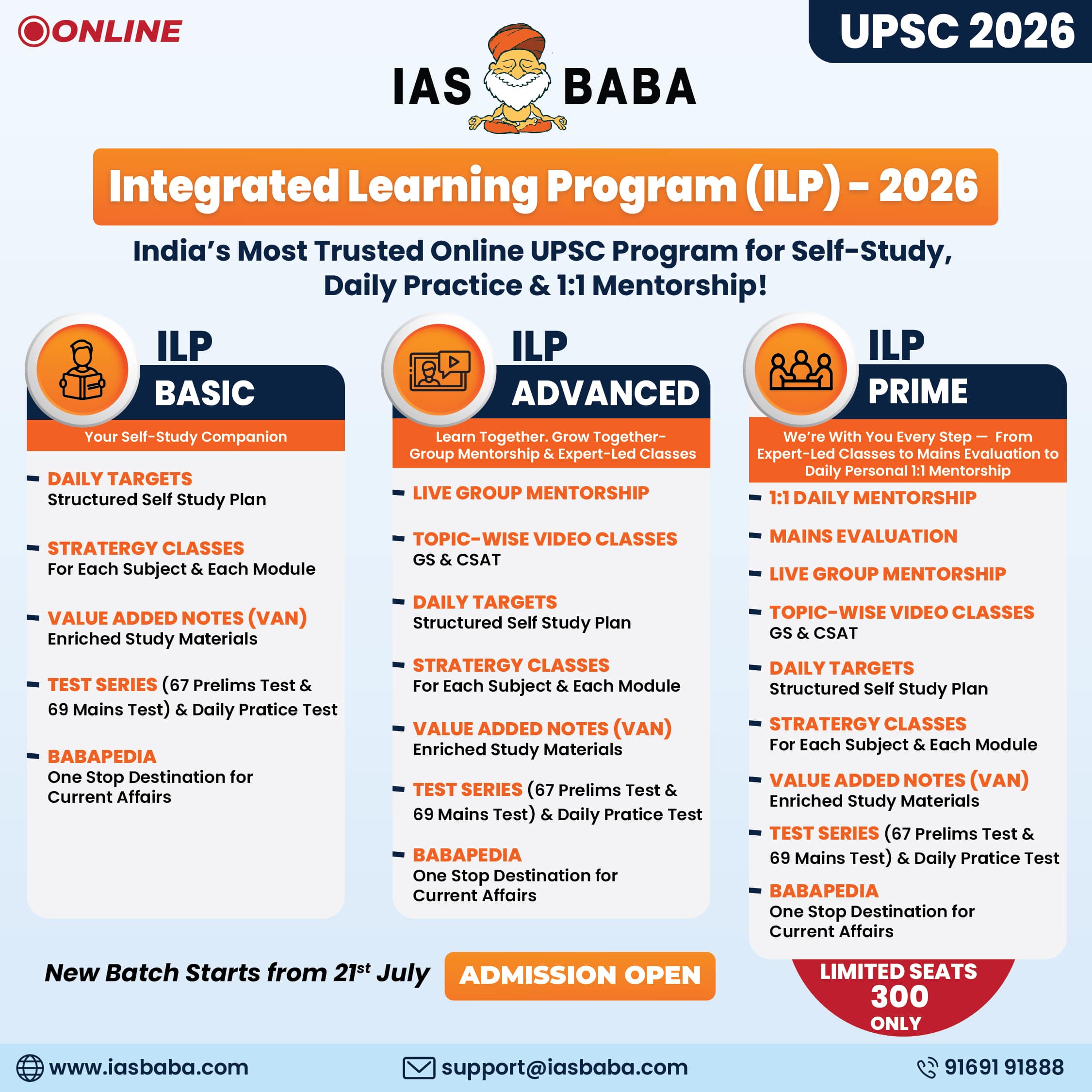IASbaba's Daily Current Affairs Analysis
Archives
(PRELIMS + MAINS FOCUS)
India-Oman Defence Relations
Part of: Prelims and GS-II -International Relations
Context: Oman’s top defence official Mohammed Nasser Al Zaabi, is on an official visit to Delhi to co-chair the Joint Military Cooperation Committee (JMMC) with Indian Defence Secretary.
Key takeaways
- The JMCC is the highest forum of engagement between India and Oman in the field of defence that evaluates and provides guidance to the overall framework of defence exchanges between the two sides.
- The JMCC is expected to meet annually, but could not be organised since 2018 when the meeting of the 9th JMCC was held in Oman.
Why is Oman important from a defence and strategic point of view?
- Oman is India’s closest defence partner in the Gulf region and an important anchor for India’s defence and strategic interests.
- Defence cooperation has emerged as a key pillar for the robust India-Oman strategic partnership. Defence exchanges are guided by a Framework MOU which was recently renewed in 2021.
- Oman is the only country in the Gulf region with which all three services of the Indian armed forces conduct regular bilateral exercises and staff talks.
- Oman also provides critical operational support to Indian naval deployments in the Arabian sea for anti-piracy missions.
- Oman also actively participates in the Indian Ocean Naval Symposium (IONS).
- The Indian Ocean Naval Symposium is a series of biennial meetings between the littoral states of the Indian Ocean region.
- It provides a forum to increase maritime security cooperation, discuss regional maritime issues, and promote friendly relationships among the member states

Image courtesy: IE
News Source: IE
Federated Digital Identities
Part of: Prelims and GS-III Economy
Context: The government has invited stakeholder comments on a proposal that seeks to establish ‘Federated Digital Identities’ to optimise the number of digital identities that a citizen needs to have, by linking various consumer identification data into a single unique ID for digital transactions such as authentication and eKYC services.
Key takeaways
- The proposal is part of the Electronics and IT Ministry’s India Enterprise Architecture 2.0 (IndEA 2.0) framework
- As various government platforms across domains are being digitised, there is a tendency to create more IDs each with its own ID card, ID management, and effort to make it unique, etc.
- Having multiple IDs makes it harder for the common man himself.
- Especially given the diversity in education, awareness and capabilities, this also has a potential to further create exclusion scenarios.
About India Enterprise Architecture 2.0 (IndEA 2.0)
- IndEA 2.0 aims to enable the governments and the private sector enterprises to design IT architectures that can span beyond organisational boundaries for delivery of integrated services.
- InDEA 2.0 proposes a model of Federated Digital Identities that seeks to optimise the number of digital identities that a citizen needs to have.
- The model empowers the citizen by putting her in control of these identities and providing her the option of choosing which one to use for what purpose.
- It gives the agency to the citizens and protects privacy-by-design.
- Electronic registries can be linked via the IDs to allow easy, paperless onboarding of citizens and also avoid repeated data verification needs.
For example
- When a beneficiary is registered for the PDS scheme, that record will be linked to Aadhaar by the PDS system storing the Aadhaar number (or a tokenised version of it).
- Similarly, when someone obtains a PAN, that record gets linked to Aadhaar where the Aadhaar number becomes the linking ID.
- Thus, if that person obtains a mutual fund account, the PAN, in turn, gets linked to the mutual fund record.
News Source: TH
Anti-Leprosy Day
Part of: Prelims and GS-II Health
Context: In India, Anti Leprosy Day is observed on 30th January every year.
- 30th January is Mahatma Gandhi’s martyrdom day. He was deeply committed to the cause of leprosy-affected persons.
What is Leprosy?
- Leprosy, also known as Hansen’s disease (HD), is a long-term infection by the bacteria Mycobacterium leprae or Mycobacterium lepromatosis.
- Infection can lead to damage of the nerves, respiratory tract, skin, and eyes.
- Leprosy is also one of the neglected tropical diseases.
Initiatives against Leprosy
- National Leprosy Eradication Programme is a centrally sponsored scheme. Its vision is “Leprosy-free India”.
- Under this, action is taken for early case detection, complete treatment of detected cases and to contain the onset of disease in close contacts.
- Other initiatives under the programme include leprosy awareness campaigns and services for Disability Prevention and Medical Rehabilitation such as provision of Microcellular Rubber footwear, Aids & Appliances and self-care kits.
- Under the programme, Reconstructive Surgeries are conducted and welfare allowance is paid to each patient undergoing Reconstructive Surgeries.
News Source: Newsonair
Miscellaneous
Rafael Nadal
- Rafael Nadal made history by becoming the first male tennis player ever to reach 21 Majors.
- Rafa has been on a relentless journey to clinch this historic 21st Slam.
- Tennis is a racket sport that can be played individually against a single opponent or between two teams of two players each
- Organized tennis is played according to rules sanctioned by the International Tennis Federation (ITF), the world governing body of the sport
(News from PIB)
India and Israel
Part of: Mains GS-II: GS-2: Effect of policies and politics of developed and developing countries on India’s interests
In News: 30 years ago, full diplomatic relations were established between India and Israel. Since then, India and Israel have successfully steered the relationship forward, despite the baggage of fraught and convulsive neighbourhoods.
Evolution of India’s relationship with Israel & Palestine
1. Nehru and Indira Gandhi era – Idealism & unequivocally pro-Palestine
India stopped at recognising Israel
- India recognised Israel in 1950. PM Nehru’s reasoning -it was “an established fact”, and that not doing so would create rancour between two UN members.
- However, India did not have full diplomatic ties with Israel.
- All there was to show for the bilateral relationship was a consulate in Mumbai, established in 1953, mainly for issuing visas to the Indian Jewish community, and to Christian pilgrims. This too was shut down in 1982 for six years when Consul General criticised India in a newspaper interview
- There was no Indian embassy in Israel till 1992.
In 1948, India was the only non-Arab-state among 13 countries that voted against the UN partition plan of Palestine in the General Assembly that led to the creation of Israel.
Reasons for India siding with Palestine (and a cold shoulder for Israel) was
- India’s own Partition along religious lines (Historical basis)
- Solidarity with the Palestinian people who would be dispossessed (HR Perspective)
- To ward off Pakistan’s plan to isolate India over Kashmir (Geopolitical reason)
- Later, India’s energy dependence on the Arab countries also became a factor (Economic & Pragmatism)
- To appeal to the sentiments of India’s own Muslim citizens (Domestic Politics)
India and Palestine
- The relationship with Palestine was almost an article of faith in Indian foreign policy for over four decades.
- At the 53rd UN session, India co-sponsored the draft resolution on the right of the Palestinians to self-determination.
- In the 1967 and 1973 wars, India lashed out at Israel as the aggressor.
- In the 1970s, India rallied behind the PLO (Palestine Liberation Organisation) and its leader Yasser Arafat (received as Head of State) as the sole and legitimate representative of the Palestinian people.
- In 1988, when the PLO declared an independent state of Palestine with its capital in East Jerusalem, India granted recognition immediately.
2. Changes after 1991- Pragmatism
- The opening of an Indian embassy in Tel Aviv in January 1992 marked an end to four decades of giving Israel the cold shoulder.
- India’s decision to normalise ties with Israel in 1992 came against the backdrop of the break-up of the Soviet Union, need for economic pragmatism (i.e. access to Israeli technology), common threats of terrorism and massive shifts in the geopolitics of West Asia on account of the first Gulf War in 1990.
- The India-Israel relationship continued to grow, mostly through defence deals, and in sectors such as science and technology and agriculture.
- There were few high-profile visits, and they all took place when the BJP-led NDA-1 under Prime Minister Atal Bihari Vajpayee was in office.
India’s balancing act with Palestine
- Despite growing Indo-Israel ties, New Delhi remained firmly on the side of the PLO, which was seen as ready for a political solution, and had accepted the two-state solution.
- In 1996 India opened a Representative Office in Gaza, which later moved to Ramallah.
- During the UPA’s 10 years in office, the balancing act intensified, and Mahmoud Abbas, head of the Palestinian Authority that administers the West Bank, visited in 2005, 2008, 2010 and 2012.
- India voted for Palestine to become a full member of UNESCO in 2011
- In 20212, India co-sponsored the UN General Assembly resolution that enabled Palestine to become a “non-member” observer state at the UN without voting rights.
- India also supported the installation of the Palestinian flag on the UN premises in September 2015.
3. Changes after 2014– whispers of Pro-Israel
- India never openly acknowledged the relationship with Israel fully, since it opened its diplomatic office in 1992. It was during NDA-2 that the government under PM Modi decided to take full ownership of the relationship with Israel.
- In 2016, India abstained again at on a UNHRC resolution against Israel.
- Until 2017, in various statements, with its expression of support for a two-state solution, India had always included a line in support of East Jerusalem as the capital of a Palestinian state. The reference to East Jerusalem went missing – considered as substantial shift of India’s policy- in PM Modi’s statement during PLO chief Mahmoud Abbas visit to India in 2017
- In February 2018, Modi became the first Indian Prime Minister to visit Israel. His itinerary did not include Ramallah (Palestine). The signal was that India had “de-hyphenated” the Israel-Palestine relationship, and would deal with each separately.
- India and Israel have a Joint Working Group on Counter-terrorism and the two countries also share real time intelligence to deal with the menace.
- The two countries collaborated to tackle the Covid-19 pandemic.
- The Jewish diaspora in India remains unique because like other communities, it coexisted peacefully in India for hundreds of years but maintained its Jewish identity despite a long isolation from other Jewish communities.
Note:
- Israeli Prime Minister: Naftali Bennett
- Masada Fortress in Israel, illuminated with lights, as the two countries celebrate 30 years of diplomatic relations.
- International Holocaust Remembrance Day on 27th Jan: Maharaja Jam Sahib of Nawanagar not only saved lives of several Jewish children but providing them shelter during World War II but also took care of them as long as they chose to be under his guardianship.
- Our two countries share values of democracy and pluralism. We also share some of our guiding civilizational philosophies: Vasudhaiva Kutumbakam in India, or the world is one family, and Tikun Olam in Israel, or heal the world.
- The central text of Rabbinic Judaism, Talmud, mentions trade with India in ginger and iron. Another foremost religious text, The Book of Esther, mentions India as Hodu.
- In 1916, one of the lawyers in the team defending one of our major nationalist leaders, Bal Gangadhar Tilak, was a Jew, David Erulkar.
- India’s historic connection with Jerusalem going back to Sufi Saint baba Farid meditating in a cave inside the city walls around 1200 CE, the role of Indian soldiers in the region during World War I and how some of these soldiers also ensured the safety of the spiritual leader of the Baha’i Faith in Israel at that time.
News Source: PIB
Green Ports & Green Shipping in India
Part of: Prelims and Mains GS-III: Infrastructure
In news: A number of initiatives have been taken in India to promote green ecosystem in maritime sector, in line with International Maritime Organization (IMO)’s 2030 Decarbonization strategy and 2050 Green House Gases (GHG) strategy.
- Ministry is also working on draft of a “Green Port Policy” document to suggest framework and guidelines for incorporation of green initiatives in the port sector.
- The proposed target outcomes will help India in achieving the “Intended Nationally Determined Contributions (INDCs) target, as well as the International Maritime Organization (IMO) 2030 target.
Initiatives include
- Increase share of renewable energy to more than 60% across major ports by 2030,setting up of solar power plants, availing of shore power supply to vessels via berths,
- Multi-clean fuel adoption for vehicles within port ecosystem,
- Gradual phasing out of diesel locomotives at ports
- Acquisition of equipments for monitoring environmental pollution,
- Acquisition of dust suppression systems,
- Setting up of sewage/ waste water treatment plants,
- Setting up of garbage disposal system for ports and ships,
- Developing shore reception facility for wastes from ships,
- Setting up projects for energy generation from renewable energy sources,
- Providing shore power to ships at berths,
- Creating Oil Spill Response (Tier-1) capabilities at all ports,
- Taking actions to improve harbour water quality,
- Inclusion of sustainable practices in terminal design, development and operation,
- Increasing green cover within port premises
In order to enhance the share of Green Shipping, various projects are being implemented by Cochin Shipyard Ltd., India’s largest shipbuilding and maintenance facility–
- Green urban mobility solutions like Hybrid Electric Ferries
- Autonomous Zero-emission vessels
- Pilot project on Hydrogen Fuel Cell Ferry, Electric Catamaran Water Taxi, Hybrid Electric Ro-Ro, Hybrid LNG-Electric Inland Cargo Carrier, Hybrid Tugs, etc.
The Way Forward
- Possibilities are also being explored for deployment of fully electric ferry and hydrogen fuelled ferries on Inland Waterways for enhancement of river cruise tourism in the country.
- Ports to take the Green Initiatives forward by putting dedicated proactive efforts towards greening of maritime sector including finalization of green port policy.
The pace at which the Green initiatives are undertaken by the 12 major ports will surely bring a green revolution in the sector making the ports cleaner and greener, which is also a key component of ‘Blue Economy’, creating environmental benefits and balancing the investments and cash flow.
News Source: PIB
(Mains Focus)
ECONOMY/ GOVERNANCE
- GS-3: Economy & developmental challenges
- GS-2: Government policies and interventions for development in various sectors and issues arising out of their design and implementation.
Kerala’s SilverLine project
Context: Despite the protests taking place across Kerala against SilverLine, state government remains firm on implementing the project.

Image Source: Indian Express
What is Kerala’s SilverLine project?
- The proposed 529.45-km line will link Thiruvananthapuram in the south to Kasaragod in the north, covering 11 districts through 11 stations.
- When the project is completed, one can travel from Kasaragod to Thiruvananthapuram in less than four hours at 200 km/hr.
- On the existing Indian Railways network, it now takes 12 hours.
- The deadline for the project, being executed by the Kerala Rail Development Corporation Limited (KRDCL), is 2025.
- KRDCL, or K-Rail, is a joint venture between the Kerala government and the Union Ministry of Railways created to execute big railway projects.
- According to K-Rail, the project will have trains of electric multiple unit (EMU) type, each with preferably nine cars extendable to 12. A nine-car rake can seat a maximum of 675 passengers in business and standard class settings.
What was the need for the SilverLine project?
- Urban policy experts have long been arguing that the existing railway infrastructure in Kerala cannot meet the demands of the future.
- Most trains run at an average speed of 45 km/hr due to a lot of curves and bends on the existing stretch.
- The government claims the SilverLine project can take a significant load of traffic off the existing stretch and make travel faster for commuters, which in turn will reduce congestion on roads and help reduce accidents.
- The government claims the line will also
- Reduce greenhouse gas emissions
- Help in expansion of Ro-Ro services
- Produce employment opportunities
- Integrate airports and IT corridors,
- Enable faster development of cities it passes through.
Where does the project stand now?
- The state government has begun the process of land acquisition after the Cabinet gave its approval in June 2021. Out of 1,383 hectares needed to be acquired, 1,198 hectares will be private land.
- The Cabinet has also approved administrative sanction to get Rs 2,100 crore from the Kerala Infrastructure Investment Fund Board (KIIFB), the investment arm of the government.
- While Kerala Chief Minister has written to Prime Minister Modi requesting his ‘personal intervention’ to give all necessary clearances, the Centre has only given an in-principle approval to the project.
- The line is expected to be constructed using equity funds from the Kerala government, the Centre and loans from multilateral lending agencies.
- A part of the detailed project report (DPR) was released by the government following demands by opposition parties and activists.
- Also, the state government is planning to issue a ‘white paper’ on the project, explaining its benefits and potential in the future. Members of the planning board will hold extensive consultations as part of the drafting of the ‘white paper’.
Why are there protests against the project?
- Political parties and citizen outfits have been spearheading separate protests.
- A petition signed by 17 Opposition MPs from the state said the project
- Project was financially unviable
- Would sink the state further into debt.
- Would lead to the displacement of over 30,000 families
- An “astronomical scam in the making”
- Green activists allege that SilverLine would cause great environmental harm as its route cuts through precious wetlands, paddy fields and hills.
- Citizen outfits allege that building of embankments on either side of the major portion of the line will block natural drainage and cause floods during heavy rains.
Connecting the dots:
ECONOMY/ GOVERNANCE
- GS-2: Government policies and interventions for development in various sectors and issues arising out of their design and implementation.
- GS-3: Indian Economy and issues relating to planning, mobilization, of resources, growth, development and employment.
DLI scheme and the chip making industry
Context: India has invited applications from 100 domestic companies, startups and small and medium enterprises to become a part of the design-linked incentive (DLI) scheme.
- Also, IT ministry has sought proposals from academia, start-ups and MSMEs to train 85,000 qualified engineers on semiconductor design and manufacturing.
Do You Know?
- It is estimated that the semiconductor industry is growing fast and can reach $1 trillion dollar in this decade. India can grow fast and reach $64 billion by 2026 from $27 billion today.
- Mobiles, wearables, IT and industrial components are the leading segments in the Indian semiconductor industry contributing around 80% of the revenues in 2021. The mobile and wearables segment is valued at $13.8 billion and is expected to reach $31.5 billion in 2026
What is the DLI scheme?
- The DLI scheme aims to provide financial and infrastructural support to companies setting up fabs or semiconductor making plants in India.
- It will offer fiscal support of up to 50% of the total cost to eligible participants who can set up these fabs in the country.
- It will also offer fiscal support of 30% of the capital expenditure to participants for building compound semiconductors, silicon photonics and sensors fabrication plants in India, under this scheme.
- An incentive of 4% to 6% on net sales will be provided for five years to companies of semiconductor design for integrated circuits, chipsets, system on chips, systems and IP cores.
- It is expected to facilitate the growth of at least 20 such companies which can achieve a turnover of more than ₹1500 crore in the coming five years.
How can the scheme make a difference in the semiconductor manufacturing industry in India?
- The sudden increase in demand of chips and semiconductor components has enhanced the need to establish a robust semiconductor ecosystem in India.
- Several sectors, including auto, telecom, and medical technology suffered due to the scarcity of chips manufactured by only a few countries.
- Schemes like the DLI are crucial to avoid high dependencies on a few countries or companies.
- The inception of new companies will help in meeting the domestic demand and encourage innovation in India.
- The DLI scheme aims to attract existing and global players as it will support their expenditures related to design software, IP rights, development, testing and deployment.
- It is a big step to bring India on the world map for semiconductor manufacturing.
What are other countries doing to be dominant in the race of chip making?
- Currently, semiconductor manufacturing is dominated by companies in the U.S., Japan, South Korea, Taiwan, Israel and the Netherlands. They are also making efforts in solving the chip shortage problem.
- U.S President Joe Biden wants to bring manufacturing back to America and reduce the country’s reliance on a small number of chipmakers based largely in Taiwan and South Korea. These chipmakers produce up to 70% of the world’s semiconductors.
- The European Commission has also announced a public-private semiconductor alliance with the goal of increasing Europe’s chip production share to 20% by 2030.
- South Korea has offered various incentives to attract $450 billion in investments by 2030.
What are the challenges in making semiconductors in India?
- In India, more than 90% of global companies already have their R&D and design centres for semiconductors but never established their fabrication units,
- Although India has semiconductor fabs in Mohali and Bangalore, they are purely strategic for defence and space applications only.
- Setting up fabs is capital intensive and needs investment in the range of $5 billion to $10 billion.
- Lack of investments and supportive government policies are some of the challenges to set up fabs in India.
- Infrastructure like connectivity to airports, seaports and availability of gallons of pure water are some other challenges to set up fabs in India.
Conclusion
- Design Linked Incentive (DLI) scheme along with the recent Production-Linked Incentive (PLI) scheme have become crucial in shaping India as an efficient, equitable, and resilient design and manufacturing hub.
Connecting the dots:
(TEST YOUR KNOWLEDGE)
Model questions: (You can now post your answers in comment section)
Q.1 India Enterprise Architecture 2.0 (IndEA 2.0) is a framework under which of the following Ministry
- Ministry of Electronics and IT
- Ministry of Urban Affairs
- Ministry of New and Renewable Energy
- Ministry of Commerce
Q.2 Leprosy is caused by which of the following?
- Fungi
- Bacteria
- Virus
- Bacteriophage
Q.3 Oman’s relative location is:
- West of Africa
- Southern tip of the Arabian Peninsula
- North of Syria
- East of Iraq
ANSWERS FOR 31st Jan 2022 TEST YOUR KNOWLEDGE (TYK)
| 1 | A |
| 2 | B |
| 3 | B |
Must Read
On Russia-Ukraine conflict:
On Mahatma Gandhi:
On Indian Agriculture:














